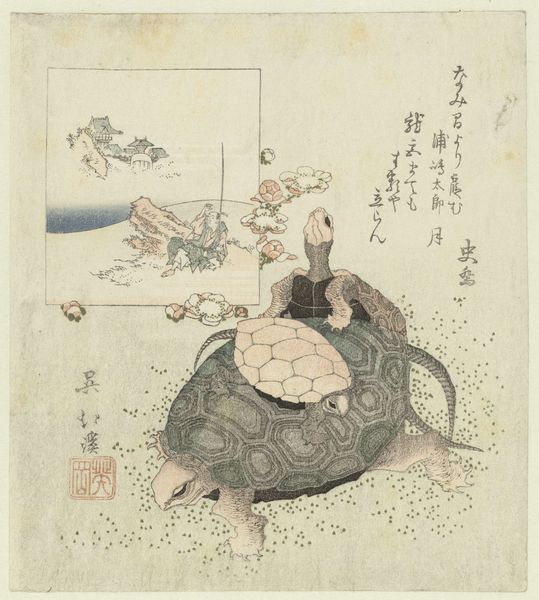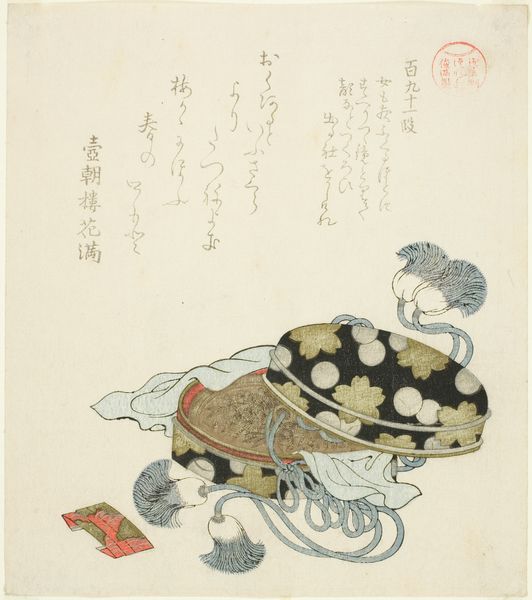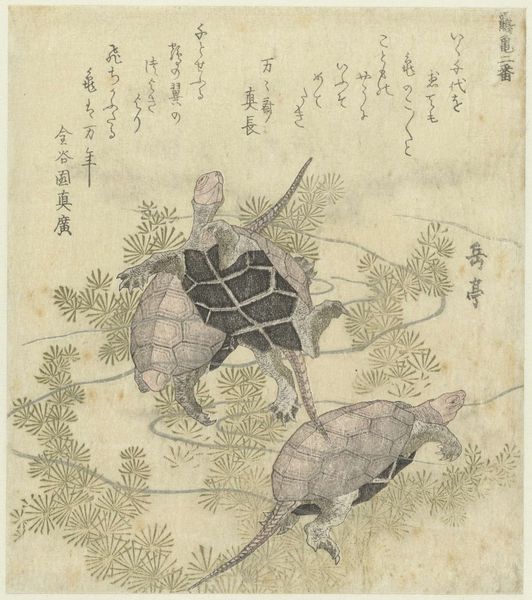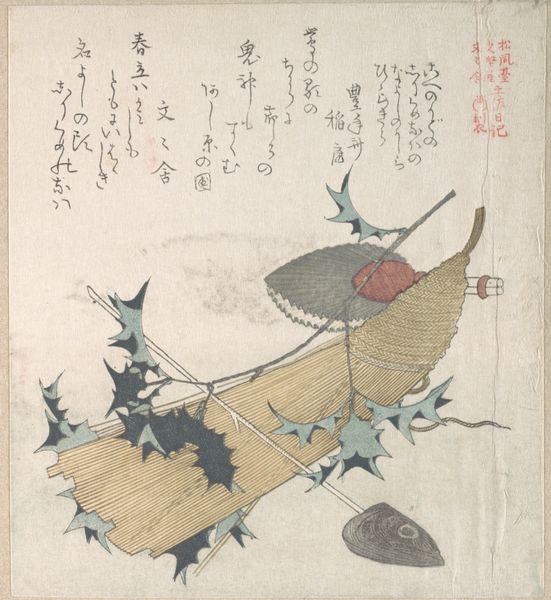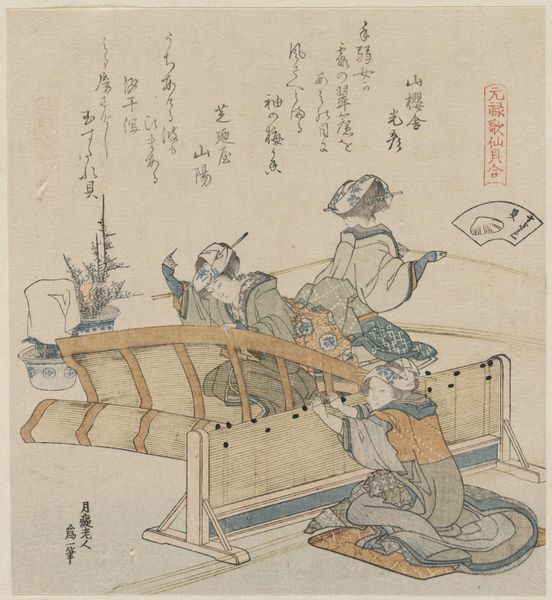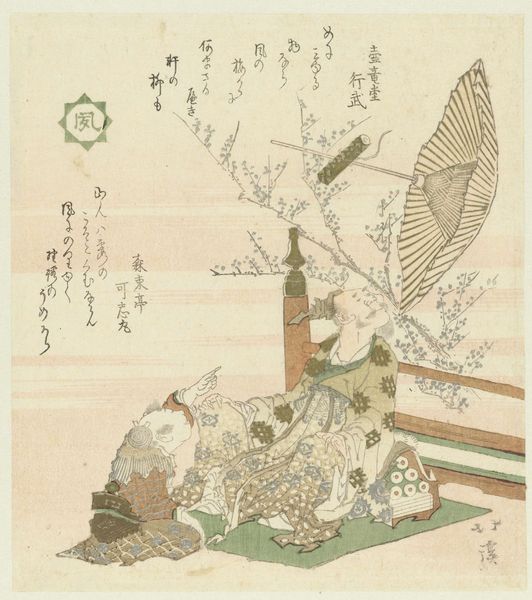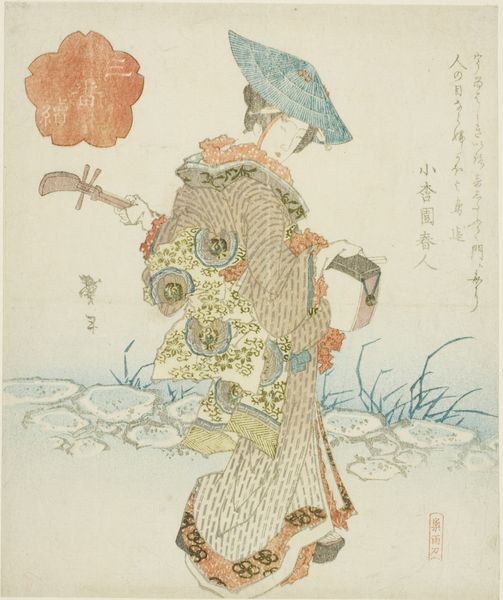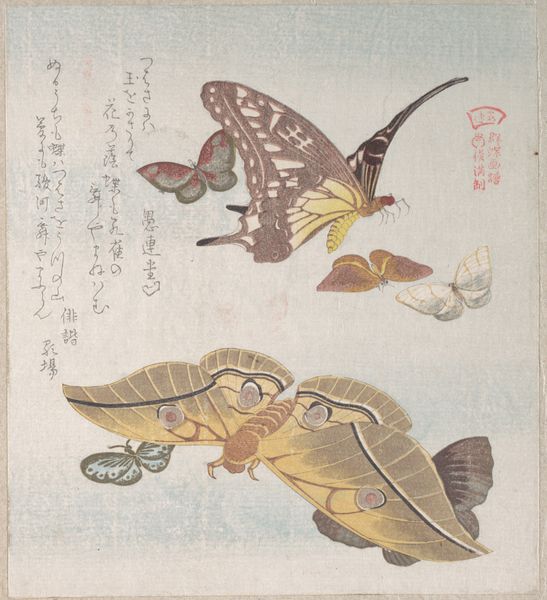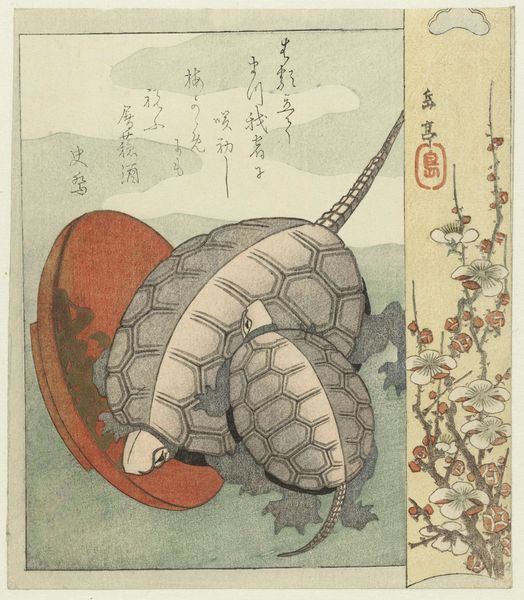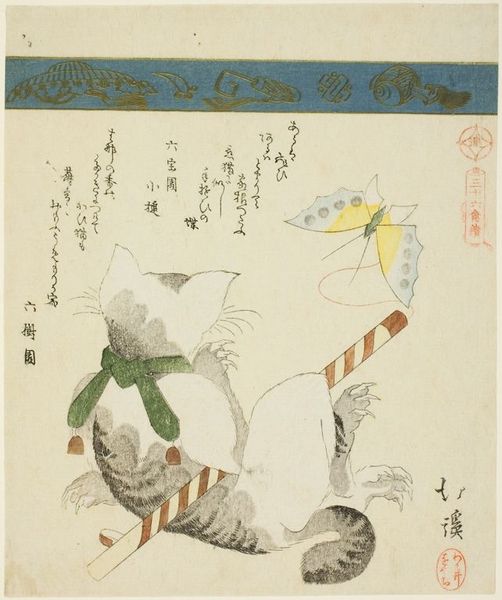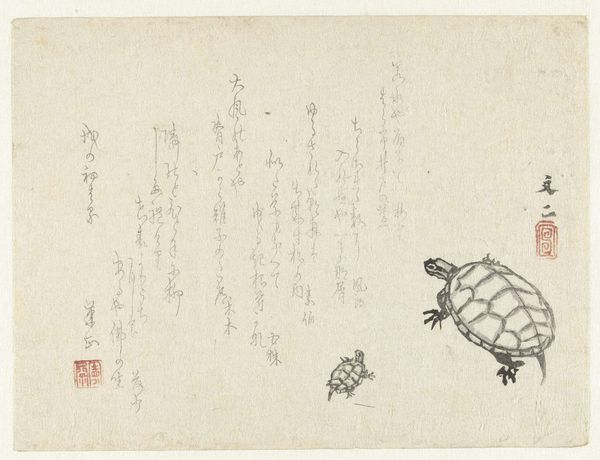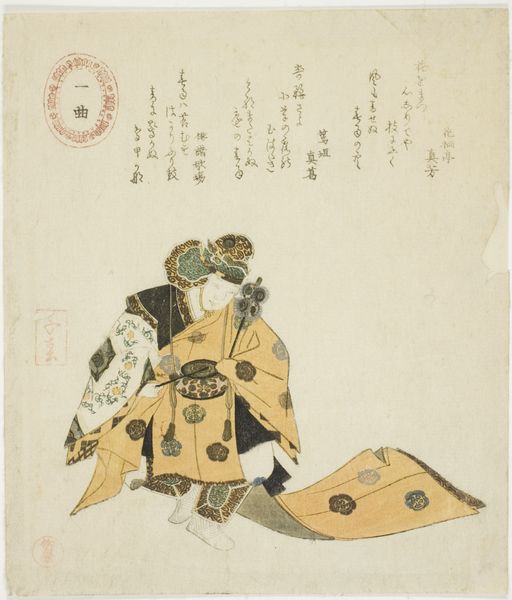
drawing, print, woodblock-print
#
drawing
#
narrative-art
# print
#
asian-art
#
ukiyo-e
#
figuration
#
woodblock-print
#
orientalism
#
line
Dimensions: height 214 mm, width 181 mm
Copyright: Rijks Museum: Open Domain
Curator: Here we have Yanagawa Shigenobu's "Aap met langharige schildpad," dating back to 1820. It’s a fascinating Japanese woodblock print, currently held in the Rijksmuseum. Editor: My first impression? It's wonderfully whimsical! A monkey perched upon a turtle with, what appears to be, quite elaborate flowing, almost ethereal, extensions sprouting from its shell. The overall effect is somewhat dreamlike, almost unsettling. Curator: It's interesting you say that. Ukiyo-e prints like these were originally aimed at a broad audience, a burgeoning urban class eager for art depicting not only traditional narratives, but also popular culture and even fantastical elements. Consider the politics of imagery, of accessibility. These weren't meant for the elite, necessarily, but to entertain the masses. Editor: Right, and it works. Thinking about the composition, there’s a certain inherent critique. This playful depiction challenges conventional hierarchies, doesn’t it? We see a juxtaposition of the primate – historically linked to humanity’s understanding of itself and its perceived exceptionalism – being juxtaposed with the humble turtle and what appears to be fantastical and unnatural plumage. Who gets to decide which creature is ‘higher’ on some theoretical chain? And whose beauty standards dictate the modification? Curator: Precisely. It begs us to consider the monkey's agency in its elevated position and how we project our own social hierarchies onto the natural world. How do colonial encounters inform this orientalist fantasy, as labeled by museum curators? What societal perceptions shaped the decision to present a monkey upon a modified turtle, in that period, within its broader social landscape? The art can be reinterpreted now, however; is this about our planet surviving us with the "long-haired" turtle adapting as long as it needs in spite of our societal misguidance (symbolized by the monkey)? Editor: I love that you connected that thread into the modern age, drawing from a contemporary viewpoint, and seeing that commentary throughout. Curator: Absolutely. Understanding how art operates within the confines of its production and consumption encourages dialogues regarding its implications over the course of history. Editor: Yes, these unexpected pairings invite deeper contemplation about shifting perceptions and power dynamics both back then and today. A true conversation starter.
Comments
No comments
Be the first to comment and join the conversation on the ultimate creative platform.
